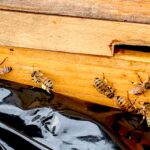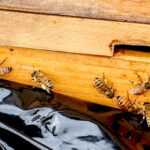
By Fred Bouchard Sit in your backyard by the flowers and watch the bees go about their busy business. Notice their different sizes, colors, and flight patterns. Chubby, buzzy bumble bees—yellow-striped, black-bottomed—cram into white roses. Slender, darting honeybees—tawny orange, pinstriped—slip in and out of pink weigela. (Smaller, faster bees have eluded my view, for now.) Are these garden denizens simply honey-gathering, pollen-spreading automatons? Not so, says author Stephen Buchmann in What a Bee Knows: “Watch closer: she may be using olfactory tools to give her a 3-D map of her surroundings. She may gather information from the movements of other [READ MORE]



